Print Publication News from Pantone!
Colour Alignment FAQ
Print Publication News from Pantone!
May 15, 2018
Within our culture of continuous improvement, Pantone has now been able to embrace new tools and processes to enhance and better sustain our printing. Thanks to PantoneLIVE, X-Rite product sophistication and adaptability, and industry experts with the ability to harness advanced technology, we are pleased to release our most colour-critical Formula Guide ever!

With our enhanced products you will appreciate:
- Better overall printed quality
- Tighter tolerances – 90% at a 2ΔE2000 or lower. (Formula Guide Coated)
- Colours better visually aligned to the 2010 Pantone Master Standards
- More tightly controlled, sustainable consistency with every production run
It is important to note that none of the printed formulas in previous guides are known to be inaccurate and our Master Standard digital data has not changed since inception. However, it is possible that a few select colours in some guides visually appeared differently due to wider process variation based on variables in the printing process such as paper stock, base pigments, finished inks, press conditions and environmental conditions – all of which can contribute to inconsistency.
These enhancements are intended to help make colour management easier at every stage of the workflow, beginning with the communication and reproducibility of our most consistent colours for graphic design.
Rationale for Enhancements:
There are many normal printing industry variables that, even with extremely small changes, can contribute to colour appearance changes from print run to print run such as: paper composition and absorption, inks (formulation accuracy, pigment source, viscosity, and drying conditions), print variation due to ink metering, production speed, and environmental factors. These can lead to realized variation in printed colour lightness, hue and chroma. In particular, small changes in hue can have noticeable visual differences due to our innate human sensitivity to hue changes.
Pantone prints its guides using possibly the world’s only 28-fountain offset printing press designed specifically for printing Pantone guides and books. Like most sophisticated printing systems, it takes a well-trained, highly-capable team to run and manage its complexities. We are proud to have such skilled professionals working at Pantone. Yet, the reality of any printing processes is that, even when stringently managed and controlled, prints may still exhibit some slight colour variation. However, within its culture of continuous improvement, Pantone has adopted new tools and processes to improve its printing. Based on the recent adoption of X-Rite technology, we are pleased to release our most exciting color publications with even tighter tolerances and improved consistency from run to run.
FAQs
What is Master Standard Digital Data?
Master standards are digital data points (spectral data, or a color’s DNA) that were determined and set at the initial printing of each Pantone Matching System® (PMS) Color when we relaunched that system in 2010. These Master standards do not change and are based on the 1,867 colors from the Pantone Formula Guide on coated paper stock. Master standards are developed considering only one type of substrate, printing method and specific ink set, using specific press settings and methodologies. The data helps enable colour to be consistently reproduced according to its original intent, not only in the printed PANTONE publications.
What does 2.0 Delta-E (ΔE or dE) signify?
Delta-E is a measurement of colour difference based on research about the visual distance between two given colours as they appear to the human eye. The method of calculating Delta-E is technically described in several ISO standards. For non-technical practitioners, a quick rule of thumb follows:
- < 1ΔE = difference between two colours is not visually perceptible
- 1 – 2ΔE = barely noticeable difference between two colours can be detected through close observation
- 2 – 10ΔE = difference between two colours can easily be noticed at a glance
However, these rules are just suggestions. There are some colours, like neutrals, that are so sensitive to change that even a Delta-E of 1 will be visibly apparent. This is why the industry (and Pantone) uses newer Delta-E method called ΔE2000. While still not perfect, the math of ΔE2000 does a better job of matching the way the human vision sees differences in colour.
When will products with advanced technology enhancements be available?
The production-enhanced Formula Guides and other publications for graphic design are now shipping from pantone.com and through our international network of distributors.
What colours are affected by this change?
Because of the consistency improvements on some of the most challenging Solid Coated PMS colours, a few colours in the new Formula Guides and other publications for graphic design might look different when compared to previous versions. These changes are due to the reduction in the variation from the digital standard, and from run to run. The visual representation of the publications has been improved, whereas the formulas associated with each colour have not changed.
Were the colours inaccurate before?
None of the printed formulas are known to be inaccurate in previous guides and our Master standard digital data has not changed since inception. However, it is possible that a few select colours in some guides visually appeared differently due to wider process variation based on variables in the printing process such as paper stock, base pigments, finished inks, press conditions and environmental conditions – all of which can contribute to inconsistency.
The printed formulas for each Pantone colour are intended as guides and are subject to adjustment in order to accommodate specific print conditions. Leveraging advanced X-Rite software and hardware technology, the updated guides reflect better-standardised colour appearance across various print runs. We recommend Pantone Paper Chips of your desired colour always accompany artwork and design files as the precise colour intent to strive for on press. We also recommend evaluating all colour-critical decisions against Pantone master digital data, which is accessible through PantoneLIVE or other Pantone-licensed solutions, in order to ensure better colour accuracy in your daily work.
What causes colours to vary between Formula Guides and other publications?
There are several factors that can affect the appearance of the colours in guides and books. Colours can appear inaccurate over time as a result of handling, fading, improper storage and light exposure, among other factors. Additionally, there are many normal printing industry variables that, even with extremely small changes, can contribute to colour appearance changes from print run to print run, such as: paper composition and absorption, inks (pigment source, viscosity, and drying conditions), print variation due to ink metering, production speed, and environmental factors. These can lead to changes in lightness, hue and chroma. In particular, small changes in hue can have noticeable visual differences due to our innate human sensitivity to hue changes.
Pantone recommends replacing guides and books every 12-18 months, as normal usage and exposure may render your colours inaccurate. ( see the below section "Normal Printing Process Colour Variances - Explained" for more information
Are all Pantone Products changing?
No, not all Pantone Products are changing. The changes in the updated Formula Guides are strictly a reduction in variation to better align colours in these publications to the Master Standard digital data, and reduction of variation on recurrent editions of the publications. Applying the new technology to our printing process will elevate the user experience when using our guide, book, and printed references by helping to better represent and standardise the consistency of visual appearance. These enhancements are specific to the Pantone Graphics System and will begin with the Formula Guides, then rolled out to the remaining products within the Graphics System.
As Fashion, Home + Interiors products are produced using different processes, those systems will not be affected. To learn more about Pantone Colour Systems, visit Pantone Colour Systems Explained.
How do I know if my Formula Guide has the old formulas in it?
The printed formulas shown in the Formula Guides are not changing. The changes in the updated Formula Guides are strictly in the visual representation to reduce variation and thereby better align colours to the Master Standard digital data. Neither the printed formulas nor the Master Standard digital data for any Pantone Matching System® (PMS) colours are changing.
Why did you change the digital data?
The Master Standard Digital data is not changing. This data is our “colour DNA” and has not changed since it was established in 2010. Pantone does not intend to change this data, unless an uncontrollable element presents itself, such as a naturally occurring pigment becoming obsolete that impedes further reproduction of that colour. To date, we have not experienced any such situation and do not foresee any in the upcoming future.
If I am using a colour that has been affected by this change, will I still be able to use/reference it?
The ink formulations printed in our guides have not changed and are still valid for use as starting points to create and repeat colours. If you are referencing the Master Standard digital data for the colour, that also has not changed – using it is the best path to producing a colour according to its original intent. However, please note that if you are comparing a colour in the newly printed guides against an old guides or paper chips, select colours may demonstrate slight visual variations. We recommend Pantone Paper Chips of your desired colour always accompany artwork and design files as the precise colour intent to strive for on press. We also recommend evaluating all color-critical decisions against Pantone master digital data, which is accessible through PantoneLIVE or other Pantone-licensed solutions, in order to ensure better colour accuracy in your daily work. Digital data can be accessed through PantoneLIVE or other Pantone-licensed software or hardware. You might also consider visually-comparing a Pantone Simulator print which is digitally produced by colour technicians at Pantone and sent out within 24-48 hours of order. Pantone Simulator prints provide a sheet of up to five PMS colours as a simulation of either the master standards or a simulation of any of 28 common materials and printing processes. Pantone Simulator Prints will be available soon. Contact Customer Service for details.
Does this mean that my existing Formula Guides are outdated and unusable?
None of the printed formulas are known to be inaccurate in previous guides and our Master standard digital data has not changed since inception. However, it is possible that a few select colours in some guides visually appeared differently due to wider process variation based on variables in the printing process such as paper stock, base pigments, finished inks, press conditions and environmental conditions – all of which can contribute to inconsistency.
The printed formulas are intended as a guide and subject to normal printing conditions. Leveraging advanced X-Rite software and hardware technology, the updated guides reflect reduced colour variation and improved colour appearance across print runs.We recommend Pantone Paper Chips of your desired colour always accompany artwork and design files as the precise colour intent to strive for on press. We also recommend evaluating all color-critical decisions against Pantone master digital data, which is accessible through PantoneLIVE or other Pantone-licensed solutions, in order to ensure better colour accuracy in your daily work.
Products reflecting our new production enhancements are available now. Pantone recommends replacing guides and books every 12-18 months, as normal usage and exposure may render your colours inaccurate.
How does this affect my other Pantone Tools such as Chip Books, On-Demand Prints, etc.?
Applying new technology to our printing process not only improves the consistency and visual appearance of our guide and book colours, as well as their relativity to the Master Standard digital data, but it also improves your overall user experience. This means that the printed colour will be more standardised throughout all Pantone Matching System® (PMS) products. For example, when a colour is compared from a Pantone guide to Pantone On-Demand Prints, they will not only align better with tighter tolerances, but the colours will look closer when possible – understanding that they are printed using different processes on different substrates, so some variance may still be noticeable.
These enhancements are specific to the Pantone Graphics System and will begin with the Formula Guides, and then applied to the remaining products within the Graphics System.
As Fashion, Home + Interiors products are produced using different processes, those systems will not be impacted. To learn more about Pantone Colour Systems, visit Pantone Colour Systems Explained.
Will this affect any colours in Pantone Plastic Standard Chips – are those now outdated?
As most of the PMS Plastics were created using Master Standard digital data, the new technology enhancements to our printing process will reduce the variation in guide and book colours that may have varied more widely in the past. The result will be improved an improved match between the printed products and our Plastic Standard Chips.
Do we need to communicate new ink formulations to our printers and other suppliers?
The printed formulas shown in the Formula Guides did not change and are still valid starting points to create ink recipes using PANTONE licensed base ink colors. In fact, the improvements to our new Formula Guides can actually be very beneficial to your ink and printer partners as a majority of all colors are now under 2dE color difference to the Master Standard digital data. In addition to using our guides and books as physical visual references, it is recommended that ink and printer partners use the digital standards in conjunction with X-Rite’s Ink Formulation software for better colour management and achievability. Pantone Master Standard Digital data can be accessed through PantoneLIVE or other Pantone-licensed products, including X-Rite’s line of color measurement instruments and QC software.
Are any changes being made to the Color Bridge or Extended Gamut guides?
All products within the Pantone Graphics System will enjoy the enhancements to our printing process as soon as they can become available in our production timeline throughout 2018.
Where can we access the correct ink formulations for Pantone colours?
Pantone’s Master Standard digital data is not changing. This data is our “colour DNA” and has not changed since it was established in 2010. Pantone does not intend to change this data unless an uncontrollable element presents itself (such as a naturally occurring pigment becoming obsolete) that impedes further creation of that colour. To date, we have not experienced any such situation and do not foresee any in the upcoming future.
The enhancements in the new Formula Guides are strictly in the visual representation to better align select colours to their original intent. Neither the printed formulas nor the Master Standard digital data for any Pantone Matching System (PMS) colours are changing.
What tools will be available for on-press or post-press quality checks?
Thanks to a combination of brand new software and device releases from Pantone’s parent company, X-Rite, Pantone was able to leverage advanced technology to enhance the printing process. These enhancements, when combined with process improvements and quality benchmarking, enable us to provide our customers better colour critical printed guides and books. New software and devices used include, but are not limited to: ColorCert 3.0, InkFormulation Software (IFS), ColorCert Scorecard Server, eXact Scan, and PantoneLIVE. For more information on X-Rite products, sales, and implementation, please visit X-Rite's Contact Us form.
Normal Printing Process Colour Variances - Explained:
Our Pantone fan decks and chip books should be used as guides to give customers a starting point to create and repeat colour. Below are normal printing process variables that can contribute to colour appearance and quality changes naturally over time.
Age Relative to Colour Variance
If you are looking at a Pantone Guide from prior to 2010 – these guides used a significantly different substrate
Papers are made of natural pulp and fibers; as such, they will yellow over time with exposure to light and other environmental factors
Moisture, temperature, exposure to light, friction (turning pages), natural oils, and soap residue or hand lotion from fingers will contribute to colour deterioration and inconsistency
Paper Qualities Relative to Colour Variance
If a paper contains optical brighteners (OBA), the brighteners will tend to “burn out” with exposure to UV light, which will change the paper colour (less blue) over time and will also affect the appearance of the transparent ink colour printed on top
Pantone’s current paper includes optical brighteners which is representative of current, in-market paper stock varieties
Differences between paper lots and source paper mills results in varying surface characteristics, which can cause slight differences in the absorption rate and “ink hold-out” of the paper. We have occasionally noticed instances where the ink lay on the paper can be affected.
Pigments Relative to Colour Variance
Some of the base ink pigments used in creating our guides are not lightfast which means they will naturally discolour when exposed to light. Among these are the Pantone Reflex Blue, Yellow, and Warm Red base inks.
Lighter colours – such as pastels – contain less pigment and more Transparent White and are therefore more prone to fading and expiration with normal exposure and guide use.
Normal Printing Processes Relative to Colour Variance
As noted – the formulas shown in our guides are starting points. Most printers, as well as Pantone, understand that application of ink to paper requires flexibility in the exact ink recipe in order to compensate for variations that naturally occur in pigments, in ink bases, and in paper stocks, to name a few.
When preparing a press run, Pantone employs an exhaustive regime of testing and checking in an effort to reduce material variations as much as possible. Although we pay a premium price for paper, matched inks and quality control equipment, these variables are reduced but are not always eliminated. Slight variations may occur between printings, as well as during each printing. Within any given printing, this process variation can result in a visual or measured colour change.
During Pantone production runs, a representative number of samples are measured using a scanning spectrophotometer in order to provide high confidence in the overall print quality of the production run. Press operators follow the guidance of software to simultaneously adjust the level of all 28 ink fountains and maintain a small ∆E value. The goal is to achieve less than 2∆E2000 for all 28 colors on the page.
FAQs for Normal Colour Variation within the Printing Process:
Why does one guide/sheet/book I bought have one colour and another purchased just recently have a different colour?
The likely cause is that the two guides were printed during different print runs. As noted above, the visual colour appearance can differ due to several possible variables, including paper composition and absorption, inks (pigment source, viscosity, and drying conditions), print variation due to ink metering, production speed, and environmental factors. These can lead to changes in lightness, hue and chroma. In particular, small changes in hue can have noticeable visual differences due to our innate human sensitivity to hue changes.
Colour variation can also occur over time as a result of handling, fading, improper storage, and light exposure, among other factors. Pantone recommends replacing guides and books every 12-18 months, as normal usage and exposure may render your colours inaccurate.
Applying the latest technology to our printing process enables us to standardise the consistency of visual appearance on our products from run to run, supported by metrics and colour data.
Why does the colour in my old guide look different than the same colour in my new guide?
Pantone Guides and Books are produced and measured against high manufacturing standards. In each edition, we ensure highly regulated ink formula consistency, use popular commercial-grade 100 lb and 80 lb text weight paper stocks, and apply careful monitoring for imperfections during the production process.
There are several factors that can affect the appearance of the colours in your guide(s). Colours may appear inaccurate over time as a result of handling, fading, improper storage, and light exposure, among other factors. Pantone recommends replacing guides and books every 12-18 months, as normal usage, handling and exposure may render your colours inaccurate.


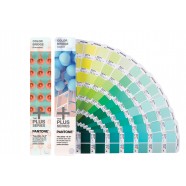
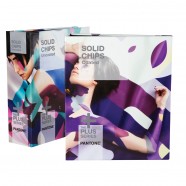
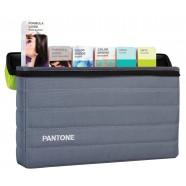
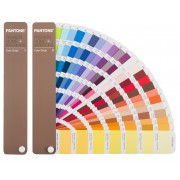
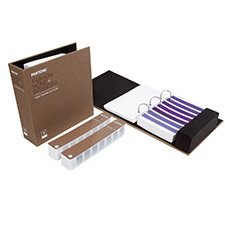
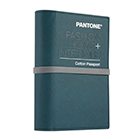
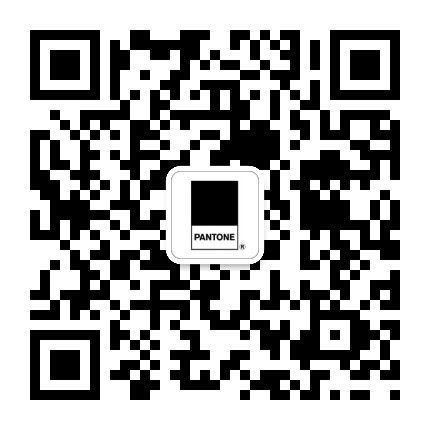

 粤公网安备44030402000239号 |
粤公网安备44030402000239号 |  手机版
手机版 电脑版
电脑版